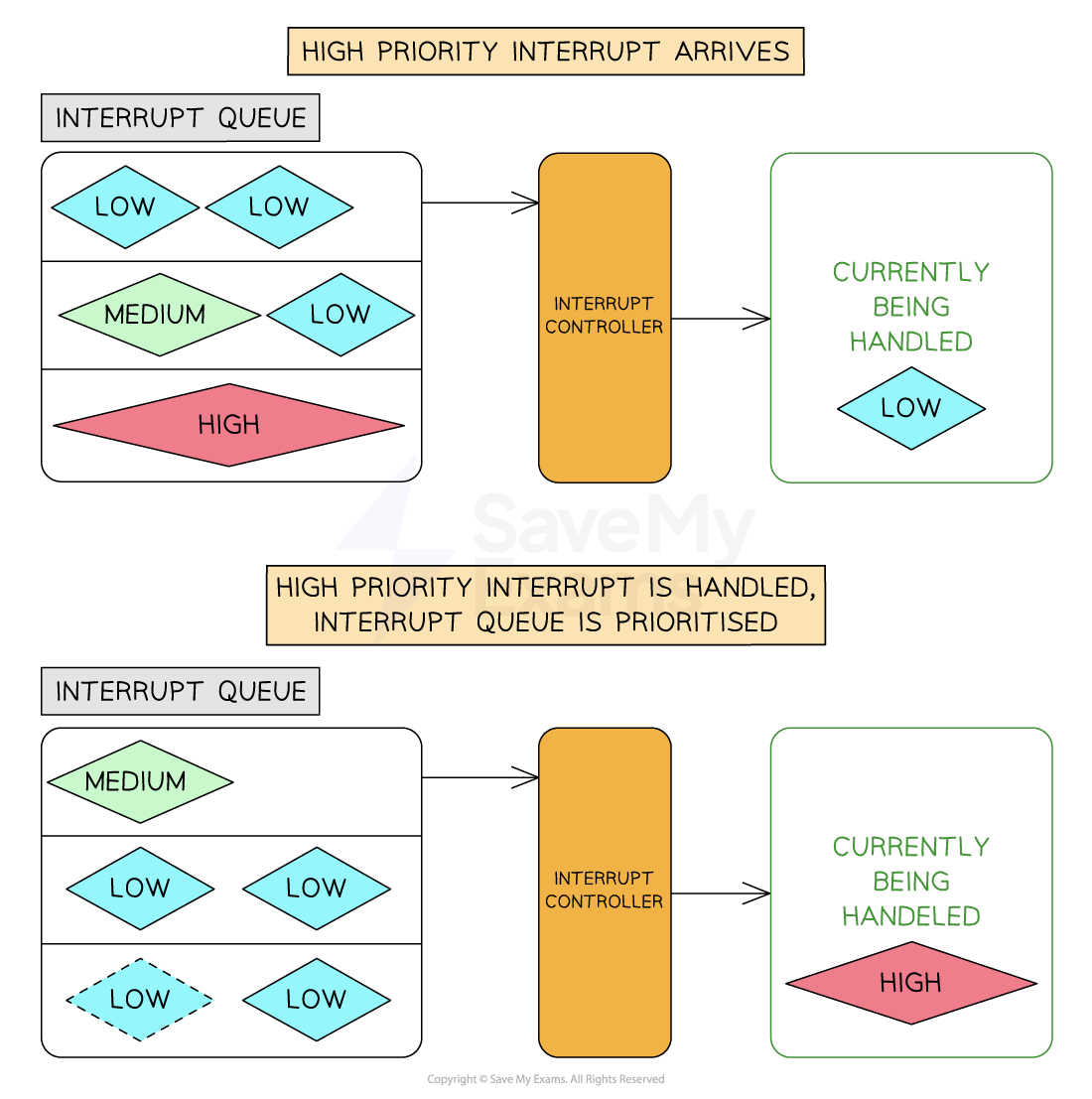System Interrupts (OCR A Level Computer Science): Revision Note
Exam code: H446
System Interrupts
What are interrupts?
In A Level Computer Science, an interrupt is a signal to the processor that stops its current task and performs a different task temporarily
Interrupts can be hardware events or time-sensitive tasks
When an interrupt occurs, the processor suspends the current program execution and transfers control to an interrupt service routine
Purpose and role of interrupts
Real-time Event Handling: hardware errors and signals from input devices e.g. hard disk failure
Device Communication: alerts from external devices e.g. printer jams and network errors
Multitasking: suspending processing in one application so that the user can switch to another
Types of interrupts
Type | Definition | Example |
|---|---|---|
Hardware Interrupts | Generated by external devices | Keyboard input, mouse movements, disk I/O requests |
Software Interrupts | Triggered by software or the operating system | Application requests to open a file, division by zero errors |
Trap Interrupts | Intentionally triggered by a program | Software debugging, handling unexpected error cases |
The interrupt process
Interrupt Request (IRQ)
An external device or software generates an interrupt, signalling the processor to stop its current task
The interrupt controller passes this to the interrupt handler for assessment
Interrupt Acknowledge
The interrupt handler decides if the interrupt needs to be dealt with now or later
If yes, the current contents of the processor registers are saved in memory
Interrupt Service Routine (ISR) Lookup
The processor fetches the corresponding Interrupt Service Routine (ISR) associated with the interrupt type
ISR Execution
The processor transfers control to the ISR and executes the routine to handle the specific interrupt
Interrupt Exit
After the ISR completes, the processor restores the content of the registers from step 2
The fetch-decode-execute cycle is resumed

The interrupt process
What is an ISR?
An ISR is a special function that handles a particular interrupt type
Each type of interrupt has a corresponding routine, e.g. printer jam, hard disk failure, file download error, network connection error all have routines to be followed when they happen
ISRs should be concise, efficient, and carefully designed to minimise the time taken to execute, as they often need to handle time-sensitive events
Interrupt priority and nesting
Interrupt prioritisation means the processor can acknowledge and switch to resolving a higher-priority interrupt
Prioritising interrupts is vital because many things can go wrong at the same time
Lower-priority ISRs may be temporarily suspended until the higher-priority ISR completes the execution
Nesting of interrupts refers to the ability of the processor to handle interrupts within interrupts
Proper management of nested interrupts avoids potential conflicts and ensures system stability

Nesting of interrupts
Interrupt priority handling

System handling of interrupt priority

Unlock more, it's free!
Did this page help you?